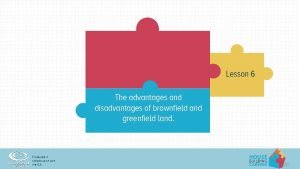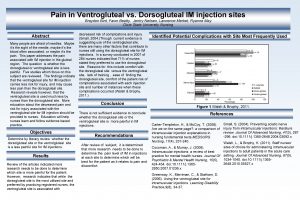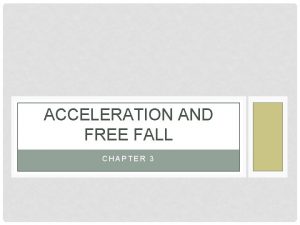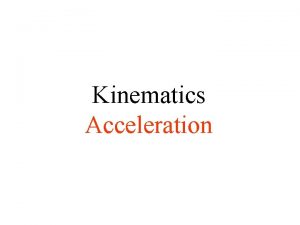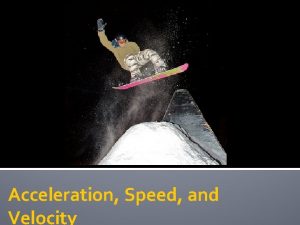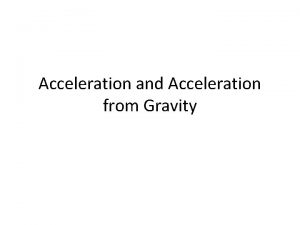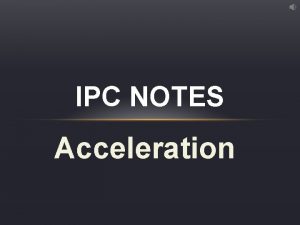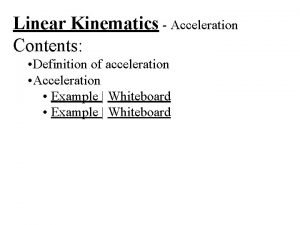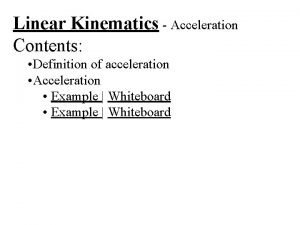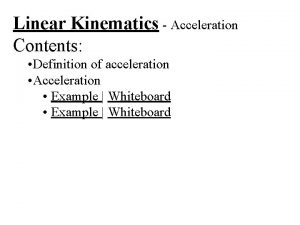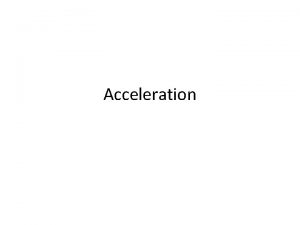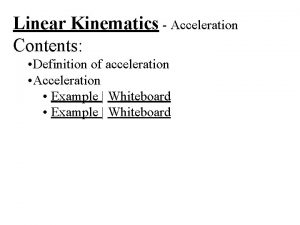GCR source composition and acceleration sites the role



















- Slides: 19

GCR source composition and acceleration site(s): the role of the observed GCR source abundances of Ne 22 and Fe 60 and the evolution of Be in the Galaxy NP (2012 a, A&A) On the origin and composition of Galactic cosmic rays NP (2012 b, A&A) Production and evolution of Li. Be. B isotopes in the Galaxy NP et al. (2016 -2018) ISSI Teamwork progress report

Galactic Cosmic Ray Source Composition Ellison et al. 1997 No, ? for elemental abundances BUT: Selection effec Is it solar Volatiles: abundance increasing with A/Q (mass to charge ratio ) Refractories: overabundant, but no clear trend with A/Q eyer, Drury (1997): SN shocks accelerate ISM gas (volatiles) and sputtered grains (refra C, O overabundant by ~1. 5 to 8 ; Most excess C attributed to WR stars

Galactic Cosmic Ray Source Composition (update) Binns et al. 2009 A mixture of 20% of massive star wind material (from Woosley/Heger 2007) with 80% of ISM allows for a better ordering of the GCR composition assuming a clear separation in refractories and volatiles only (unclear for intermediate cases: semi-volatiles, like O ? It does not work well with other sets of massive star yields) For some obscure reason, it is concluded that this necessarily happens In a superbubble environment

GCR Source Isotopic Composition: SOLAR ( ≡ ISM) Exception: Ne 22/Ne 20~5 ⊙ Only site with high Ne 22/Ne 20 Winds of WR stars Cassé & Goret 1978 Cassé & Paul 1982) BUT WHERE AND HOW does the mixture occur?

Are GCR accelerated in superbubbles ? In a superbubble (OB association) the time integrated Ne 22/Ne 20 ratio remains as high as the observed GCR one ONLY for a short early period (when winds are important) and ONLY if no original gas is left over after star formation. Most of the time, and in realistic conditions Ne 22/Ne 20 is close to solar and metallicity is highly supersolar (not observed) Superbubbles CANNOT BE at the origin of GCR Ne 22/Ne 20 nor at the origin of the bulk of GCR (NP 2012 a)

Are GCR accelerated in massive star winds ? (I STILL THINK SO) A forward shock (FS) is launched at MEXP and runs through the wind of the star, which is enriched with products of H- and/or He- burning, and then – perhaps - in the interstellar medium. ASSUMPTION: Particle acceleration H-burn: C, O → N ~SOLAR COMPOSITI Comp ON He-burn: N→ Ne 22 He → C starts in the beginning act of the Sedov-Taylor (ST) phase, object when MSWEPT ~ MEJECTA BUT: When does it stop ? Depending on the previous mass loss of the star, acceleration may occur when the shock is still within the wind (more massive stars) or in the ISM (less massive stars),

Caprioli 2011

MIN Particle acceleration starts in beginning of ST and is assumed to stop when the velocity of the shock drops to MIN chosen such as the IMF averaged ratio Ne 22/Ne 20 of accelerated particles equals the observed one R = (Ne 22/Ne 20)GCR = 5. 3 ⊙ NP 2012 a TIME (yr)

Start of acceleration End of acceleration Geneva Rome A 1: Beginning ST and A 2: End acceleration S=1900 km/s Process ed material NP 2012 a The IMF averaged Ne 22/Ne 20 of accelerated particles equals the observationally derived one for GCR sources R = (Ne 22/Ne 20)GCR = 5. 3 ⊙ for MIN=1900 km/s forward (for. The rotating star shock models accelerates of Geneva) particles from a pool of mass MACCEL = A 2 – A 1 between the beginning The composition of that of ST (A 1) material and =1900 km/s (A 2) is : stellar Envelope ( ~solar with high Ne 22/Ne 20) plus a few times ISM The 20% (winds)/ 80% (=solar) (ISM) proportion is easily obtained

GCR composition is heavily enriched in Li, Be, B (a factor ~106 for Be and B) Solar composition: X(Li) > X(B) > X (Be) GCR composition: X(B) > X(Li) > X(Be) Same order as spallation cross sections of CNO Li. Be. B: σ(B) > σ(Li) > σ(Be) Li. Be. B is produced by spallation of CNO as GCR propagate in the Galaxy (Reeves, Fowler, Hoyle 1970)

p, α (GCR) + CNO(ISM) Li. Be. B (ISM) A (direct) CNO(GCR) + p, a(ISM) B (inverse) The composition of GCR determines whether Be is produced as Li. Be. B (GCR) PRIMARY or SECONDARY during galactic chemical evolution Primary: produced from initial H and He inside the star Yield: independent of initial metallicity (Z) Examples: C, O, Fe… Secondary: produced from initial metals (Z) inside the star Yield: proportional to initial metallicity (Z) Examples: N 14, O 17, s-nuclei… Abundance(primary): XP t Z Abundance(secondary): XS t 2 Z 2

Evolution of Be Early 90 ies: Be (and B) observations in low metallicity halo stars 1 2 Be abundance evolves exactly as Fe (unexpected, since it is produced from CNO in GCR and it should behave as secondary, not as primary !) Was the CNO fraction of GCR ~constant in the past ? PERHAPS… IF from ROTATING massive stars

Self-consistent calculation of evolving composition of ISM AND GCR With this, “physically motivated” composition of GCR and proper GCR/SN energetics, primary Be is naturally obtained`in GCE models Chem. Evolution Geneva models From models of fast rotating stars =0. 5(XISM + After accounting for XWIND) observed atomic effects NP 2012 b

Radioactive Fe 60 ( �� ~2. 5 My) in GCR source Fe 60/Fe 56 ~ 10 -4 (Binns et al. 2016) Stellar models: Fe 60/Fe 56 ~ 2 10 -3 in the core (Chieffi/Limongi 2018) ISM (observed in �� ): Fe 60/Fe 56 ~ 10 -7 (Wang et al. 2015) Some mixture of wind (Ne 22 rich) ith little (a few %) core material (Fe 60 rich) of rotating stars is required

actic Cosmic Rays : what is the composition of accelerated matt A ISM B Not enough energy. SN for CR Solar Ne 22/Ne 20 RS Secondary Be SN Solar Ne 22/Ne 20 FS Forward Shock accelerates ISM C ISM FS Reverse Shock accelerates SN eject D ISM Wind SBM Solar Ne 22/Ne 20 SN FS Ne 22/Ne 20 OK SN Shocks accelerate Superbubble matter Forward Shock accelerates Wind+litt

Toala et al 2017: WR 18 1 D and 2 D simulations suggest that the forward SN shock propagating In the wind nebula of a massive star is reflected when reaching the wind shell accelerating particles inside the wind bubble (Dwarkadas 2007), perhaps more efficiently in the low density hot region of the wind (Ne 22) than in the higher density, cold inner region (Fe 60)

CONCLUSIONS (assumption dependent) Assumption 1: Observed GCR source Ne 22 and Fe 60 are universal (not local) 1. The bulk of GCR cannot originate from Super. Bubble material (where WR and SN ejecta of the whole IMF are mixed) otherwise the GCR source ratio Ne 22/Ne 20 should be ~solar (NP 2012 a) 2. The bulk of GCR may originate from material of winds from individual massive stars (Ne 22 -rich) + little ISM (=solar) and a little contribution of core ejecta (Fe 60 -rich, through the reverse/reflected shock) Particle acceleration should be essentially confined in the stellar wind 3. If stars at low metallicity are fast rotating (near break-up velocity, Geneva models), the resulting GCR source composition can also explain the observed evolution of light elements Be and B (NP 2012 b) (if moderately rotating – Roma models – Be. B evolution not explained)

CONCLUSIONS (assumption dependent) Assumption 2: Observed GCR source Ne 22 and Fe 60 are local (not universal) 1. The bulk of GCR can originate either from pure ISM accelerated from forward shocks (optimal) or from Superbubble material mixed « carefully » with ISM (Superbubbles have higher α/Fe than ISM (most Fe-peak coming from SNIa) and are defficient in s-elements (most of them coming from AGB stars) 2. The local component of GCR may originate from wind material from an individual local/recent massive star (Ne 22 -rich) + little ISM (=solar) and a small contribution of its core ejecta (Fe 60 -rich, through the reverse/reflected shock) Accelerated particles should be little diluted with bulk of GCRs 3. Hard to explain observed evolution of Be. B: Substantial amount of « gymnastics » required

CONCLUSION (final) The observed source composition of GCR, (enriched in stable Ne 22 and radioactive Fe 60 and more in refractories than in volatiles), and the evolution of spallogenic Be provide important, yet undeciphered, clues to the site and the physics of GCR acceleration
 Kelayakan cuti gantian
Kelayakan cuti gantian Cara pengiraan cuti rehat khas guru
Cara pengiraan cuti rehat khas guru Fbr
Fbr Gcr cism
Gcr cism Linear quantities
Linear quantities Linear acceleration
Linear acceleration Tangential acceleration and centripetal acceleration
Tangential acceleration and centripetal acceleration Is radial acceleration the same as centripetal acceleration
Is radial acceleration the same as centripetal acceleration Radial acceleration
Radial acceleration Azure web role vs worker role
Azure web role vs worker role Krappmann modell
Krappmann modell Statuses and their related roles determine
Statuses and their related roles determine Volutrol administration set
Volutrol administration set Im injection sites and volumes pediatrics
Im injection sites and volumes pediatrics Brownfield site disadvantages
Brownfield site disadvantages It is the movement led by the world wide web
It is the movement led by the world wide web Epaxial im injection dog
Epaxial im injection dog Active directory 原理
Active directory 原理 Ventrogluteal site vs dorsogluteal
Ventrogluteal site vs dorsogluteal Advantages and disadvantages of brownfield sites
Advantages and disadvantages of brownfield sites














